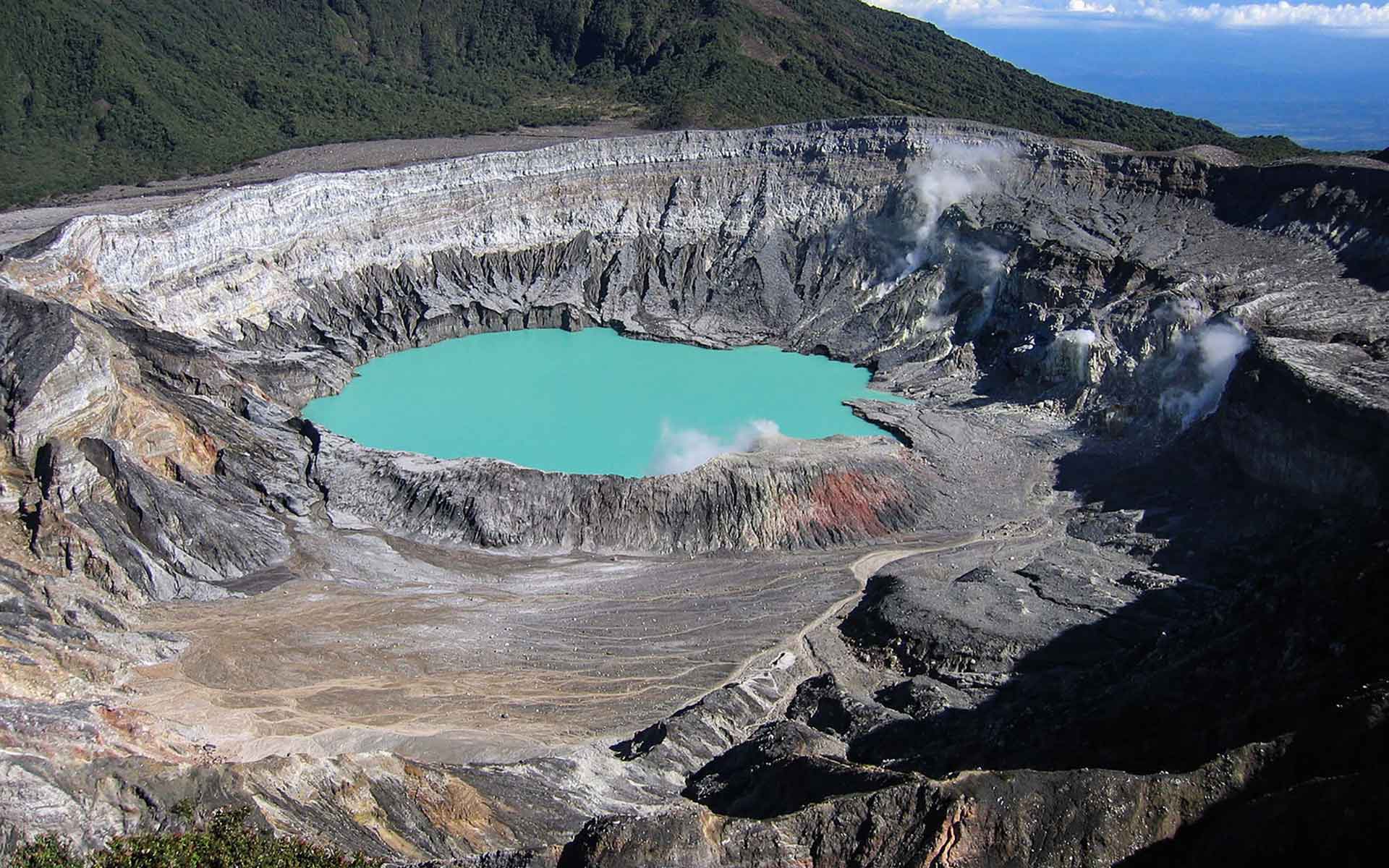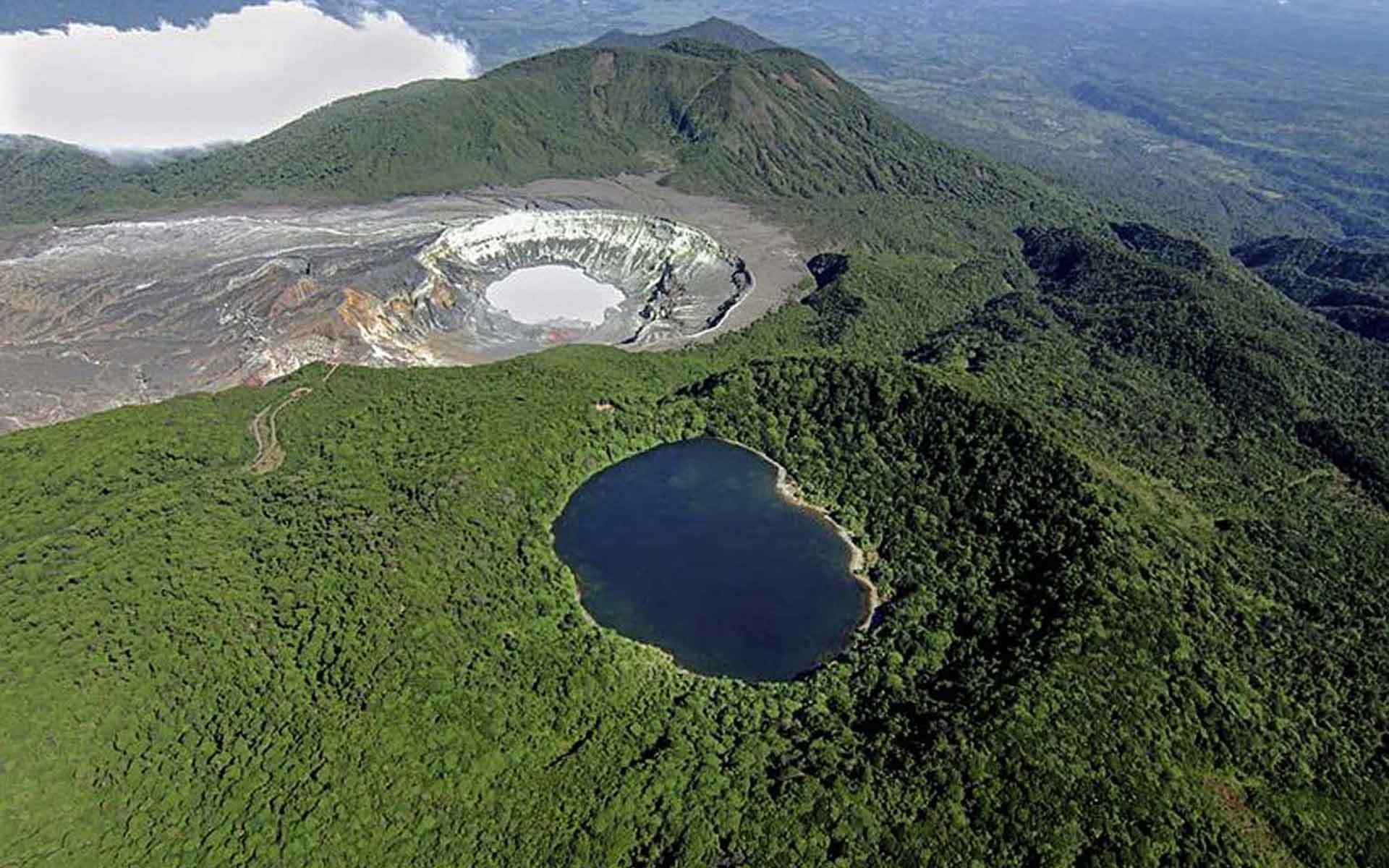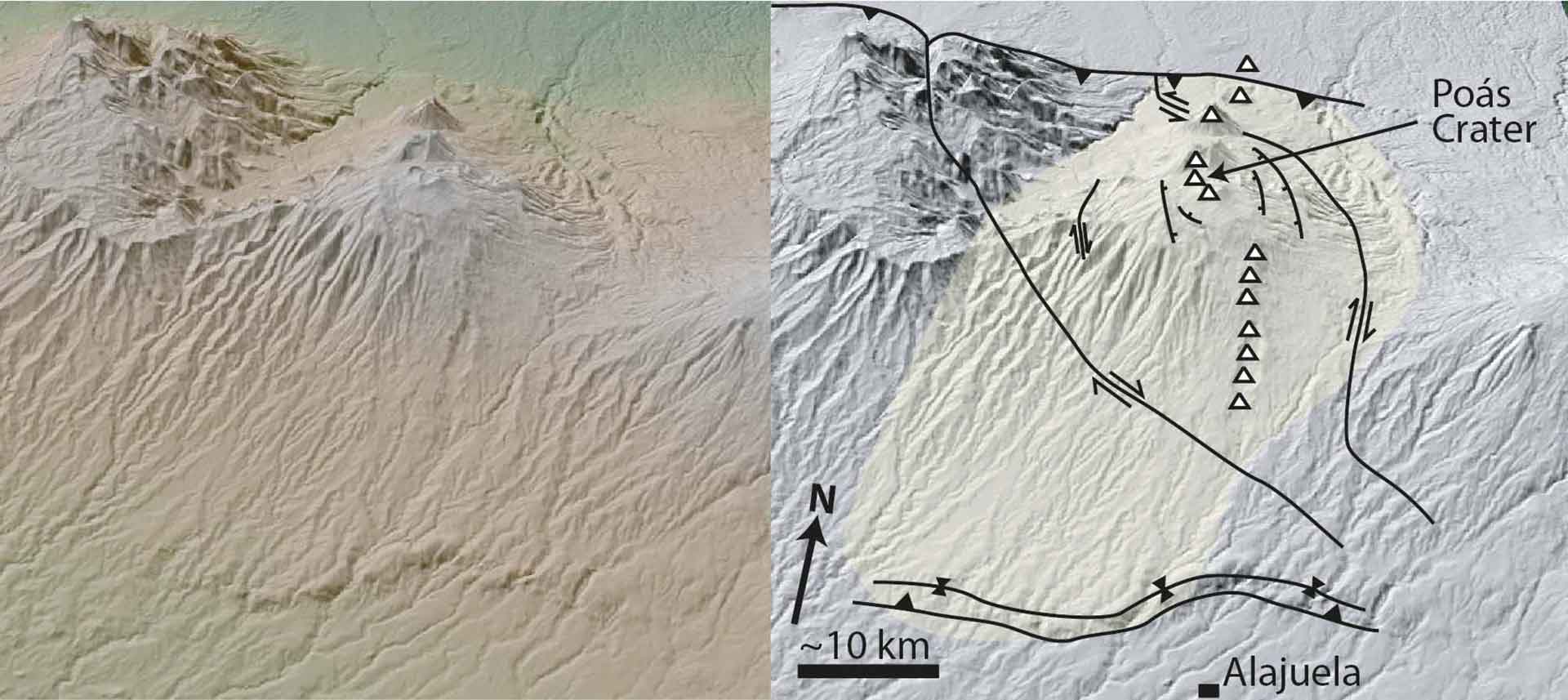
Aerial view of Poás volcano looking into the main active crater lake, the central manifestation of its permanently active hydrothermal system.
Geological Period
Quaternary – Holocene
Main geological interest
Volcanology
Geomorphology and active geological processes
Location
10°11’47.0″N, 84°13’54.0″W
Aerial view of Poás volcano looking into the main active crater lake, the central manifestation of its permanently active hydrothermal system.
An iconic and type example of an arc shield-like massive stratovolcano and type example of an active crater lake complex.
Poás volcano is a huge arc volcano-tectonic massif, large enough to deform gravitationally under its own weight (Borgia et al., 1990). It is also a globally important example of a persistently active magmatic-hydrothermal crater lake system, with attendant important geosphere-biosphere interactions. Because of this and its central location as a ‘drive in’ volcano, Poás is not only one of the most studied volcanoes in Central America, but also a global tourist attraction. The continuity of scientific studies at Poás from the 19th Century to present show that this is a globally important site for geosciences.
- Geological description
Poás volcano is a composite stratovolcano with an irregular complex form and a basal area of about 400 km2 (Alvarado, 2021). It has been an object of close study from the 19th Century, especially due to its permanently active crater lake, which with Raupehu, New Zealand, and Kelud, Indonesia, form a global group of key examples of this highly hazardous, but scientifically intriguing phenomena (Francis et al., 1980). The whole Poás volcanic complex is proposed as an IUGS geosite, because the entire structure is one unique volcano-tectonic entity with its own gravitational and magmatic tectonics, including large basal thrust faults and a summit rift (Borgia et al., 1990; Montero et al., 2009; Ruiz et al., 2019). It also has a specific geological ecosystem individuality, founded on the edifice form and the interactions between the crater lake system and the environment (Pérez-Umaña et al., 2019). Its north-south alignment of vents also reflects the ongoing regional strike-slip tectonic situation of subduction close to an oceanic ridge.
It is composed of basalt and andesite and lesser dacite. Its prehistoric activity ranges from lava flows, lahars, plinian to strombolian eruptions as well as phreatic to phreatomagmatic. The historical activity is presented from 1828 to the present (Alvarado, 2021).
- Scientific research and tradition
Poás volcano has been studied from its volcanology, tectonics, and geomorphology from the 19th century (references in Borgia et al 1990), and continues to be studied intensely (Alvarado, 2021; Ruiz et al., 2019), including by geo – ecological studies and geoheritage outputs (Pérez-Umaña et al., 2019).
- Reference
Alvarado, G.E. (2021) Costa Rica y sus volcanes. EUNA, EUCR and Editorial Tecnológica de Costa Rica. San José, Costa Rica. Available at: https://ulibros.com/index.php/costa-rica-y-sus-volcanes-vkb1d.html.
Borgia, A. et al. (1990) ‘Fault propagation folds induced by gravitational failure and slumping of the central Costa Rica Volcanic Range: Implications for large terrestrial and Martian volcanic edifices’, Journal of Geophysical Research: Solid Earth, 95(B9), pp. 14357–14382. Available at: https://doi.org/10.1029/JB095iB09p14357.
Francis, P.W. et al. (1980) ‘Pyroclastic sulphur eruption at Poás Volcano, Costa Rica’, Nature, 283, pp. 754–756. Available at: https://doi.org/10.1038/283754a0.
Montero, W. et al. (2010) ‘División del deslizamiento tectónico y transtensión en el macizo del volcán Poás (Costa Rica), basado en estudios neotectónicos y de sismicidad histórica’, Revista Geológica de América Central [Preprint], (43). Available at: https://doi.org/10.15517/rgac.v0i43.3456.
Pérez-Umaña, D. et al. (2019) ‘Comparative Analysis of Geomorphosites in Volcanoes of Costa Rica, Mexico, and Spain’, Geoheritage, 11(2), pp. 545–559. Available at: https://doi.org/10.1007/s12371-018-0313-0.
Ruiz, P. et al. (2019) ‘Geochemical and Geochronological Characterisation of the Poas Stratovolcano Stratigraphy’, in F. Tassi, O. Vaselli, and R.A. Mora Amador (eds) Poás Volcano: The Pulsing Heart of Central America Volcanic Zone. Cham: Springer International Publishing (Active Volcanoes of the World), pp. 13–43. Available at: https://doi.org/10.1007/978-3-319-02156-0_2.
- Author(s)
Adolfo Quesada Román
Laboratorio de Geografía Física, Escuela de Geografía, Universidad de Costa Rica

